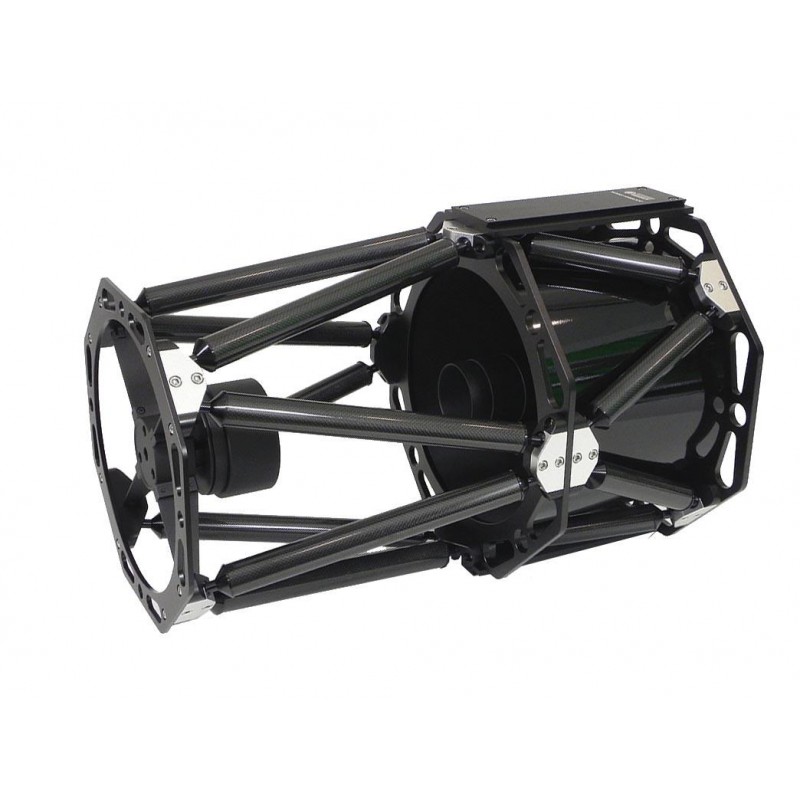
Reference: ZWEAF-N
Brand: ZWO
Reference: ZWEAF-N
Brand: ZWO
Reference: POA-URANUS-C
Brand: Player One
Reference: POA-ACS
Brand: Player One
Reference: AS-FRA400
Brand: ASKAR - Sharpstar
Reference: ZWASI120MINI
Brand: ZWO
Reference: AS-SET-DUO-D1D2
Brand: ASKAR - Sharpstar
Reference: ZWDC-Y-SPLIT
Brand: ZWO
Reference: AS-REDFRA400
Brand: ASKAR - Sharpstar
Banner







The TS 10" f/8 Ritchey-Chrétien Astrograph is a dream telescope for astrophotography.
 security
security
100% Secure Payment
 Delivery policy
Delivery policy
Express shipping of in-stock parts
 RETURN POLICY
RETURN POLICY
Express shipping of in-stock parts
In Short:
|
Most large professional telescope are constructed according to the RC principle. Until recently, these telescopes were unaffordable for amateurs. RC telescopes from Teleskop-Service are primarily aimed to amateur astronomers with photographic interest. These telescopes are perfectly suited for high-resolution astrophotography. Of course, an RC can also be used for visual observing. Here, the large corrected field of view is noticeable, too. In total, the stars are sharper than, for example, in a Schmidt-Cassegrain.
Due to the large corrected field of view, you can, for example, use a DSLR up to APS-C format without corrector. Thus the RC is a pure mirror system for astrophotography. The images become ultrasharp. For imaging dirctly in the focus, you will need the M117x1 extension tubes which are supplied. They are threaded between telescope and focuser, thus reducing back-focus.
The generous back-focus also allows attaching correctors which we recommend when using sensors of at least full-frame size. You can also attach a focal reducer, thus further increasing the speed of the RC.
You can connect the camera via 2" receptacle or thread it via the M77x0.75 female thread on the extension tube and M74x0.75 male thread of the focuser. Suitable adapters can be found in the accessories section.
The CCD47 improves the focal ratio from f/8 to f/5.36, thus reducing the exposure time to less than 50%. With this, you can capture dim nebulae and galaxies with moderate exposure times.
The weight reduction is minimal - only about 500 grams - the main advantage ist the focus stability when temperature changes. That is important for astrophotography. When temperatures drop, metal contracts and the focus moves. Refocusing is necessary. A carbon tube does not change, the combination of quartz glass mirror and carbon composite tube makes a readjustment of the sharpness obsolete, even for long time exposures.
Lightweight yet strong carbon fiber truss tubes have low thermal expansion characteristics. Shifts in focus due to temperature changes are minimized because of this design. The trusses are also designed to flex equally, keeping the optics in collimation regardless of the position of the telescope.
The 3" Monorail focuser is a further development of the Crayford design. The load is not carried by four (often underdimensioned) ball bearings, but on a stainless steel track on the base, thus preventing tilting and bending even under high loads. It is countered by a big knurled screw that centers the inner tube exactly to the rail. The load is distributed evely across the rail´s surface.
Primary and secondary mirror of quartz glass with 99% reflectivity and protective dielectrical quarz layer:
Quartz glass does not change its dimensions if temperature changes. When the temperature changes slowly during an exposure, other mirror substrates, like Pyrex, tend to a deformation of the mirror and thus to a shift of the focus. This problem does not exist for mirrors of quartz glass. Thus the focus is better maintained which is very important for long exposures. Both mirrors are coated with 99% reflectivity. The image is obviously brighter than the one of telescopes with only 90% or 94% reflection layer.
The TS RC astrographs are true Ritchey-Chrétien telescopes. Maksutovs and Schmidt-Cassegrains have spherical mirrors and need correctors for making a large field usable. With Schmidt-Cassegrains, you can see the aberrations in the field even when working visually. Most times, Maksutov-Cassegrains are so slow that they are not suitable for astrophotography. RC telescopes have hyperbolical primary and secondary mirrors. They are more difficult to manufacture, but offer a significantly sharper field with less aberrations throughout the field.
Celestron EHD or Meade ACF telescopes need a corrector. Additionally, these telescopes have a Schmidt plate at the front side which is prone to dew. The RC is a pure reflection system without lenses in the light path. Thus you can use the complete light even in the infrared range. The image is brighter and the exposure times get shorter. The field of an RC telescope is coma-free by design and relatively flat.
Telescopes with focusing via movable primary mirror often suffer from the "shifting problem". The image shifts while focusing or even jumps. By now, Meade and Celestron have the problem under control, but the effect is noticable nonetheless. TS RC telescopes do not have this problem, as their primary mirror is fixed. Focusing is done via a high-quality focuser. An additional advantage is the optimal distance from primary to secondary mirror. This gives you the guarantee of the best possible image. If the primary mirror moves relatively to the secondary, you will practically never have the optimal distance.
No customer reviews for the moment.
Reference: TSRC6M
Brand: TSOptics
Reference: TSRC8M
Brand: TSOptics
Reference: KE096
Brand: Kepler
Reference: TSRC8C
Brand: TSOptics
Reference: TSRC10T64
Brand: TSOptics
Reference: CCD47
Brand: TSOptics
Reference: RC10-B-EXT
Brand: TSOptics
Reference: TSCOLLIT
Brand: TSOptics

The TS 10" f/8 Ritchey-Chrétien Astrograph is a dream telescope for astrophotography.
check_circle
check_circle